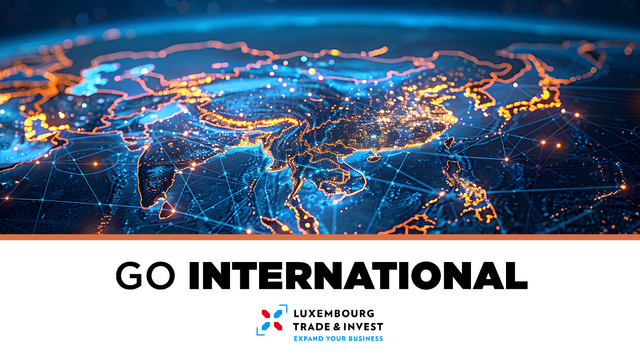
Chapitres
A Malay trading port known as Temasek existed on the island of Singapore by the 14th century. The settlement changed hands several times in the ensuing centuries and was eventually burned in the 17th century and fell into obscurity. The British founded Singapore as a trading colony on the site in 1819. It joined the Malaysian Federation in 1963 but was ousted two years later and became independent. Singapore subsequently became one of the world's most prosperous countries with strong international trading links (its port is one of the world's busiest in terms of tonnage handled) and with per capita GDP equal to that of the leading nations of Western Europe.
Indicateurs clés
- Surface
- 719 km2
- Population
- 5,866,139 (July 2021 est.)
- Type de gouvernement
- parliamentary republic
- Langues
- English (official) 48.3%, Mandarin (official) 29.9%, other Chinese dialects (includes Hokkien, Cantonese, Teochew, Hakka) 8.7%, Malay (official) 9.2%, Tamil (official) 2.5%, other 1.4%
- PIB
- $339.998 billion (2020 est.)
- Taux de croissance
- -5.4% (2020 est.)
- HDI
- 11
- Capitale
- Singapore
Indicateurs macroéconomiques
Singapore has a highly developed and successful free-market economy. It enjoys a remarkably open and corruption-free environment, stable prices, and a per capita GDP higher than that of most developed countries. Unemployment is very low. The economy depends heavily on exports, particularly of electronics, petroleum products, chemicals, medical and optical devices, pharmaceuticals, and on Singapore’s vibrant transportation, business, and financial services sectors.The economy contracted 0.6% in 2009 as a result of the global financial crisis, but has continued to grow since 2010. Growth from 2012-2017 was slower than during the previous decade, a result of slowing structural growth - as Singapore reached high-income levels - and soft global demand for exports. Growth recovered to 3.6% in 2017 with a strengthening global economy.The government is attempting to restructure Singapore’s economy to reduce its dependence on foreign labor, raise productivity growth, and increase wages amid slowing labor force growth and an aging population. Singapore has attracted major investments in advanced manufacturing, pharmaceuticals, and medical technology production and will continue efforts to strengthen its position as Southeast Asia's leading financial and technology hub. Singapore is a signatory of the Comprehensive and Progressive Agreement for Trans-Pacific Partnership (CPTPP), and a party to the Regional Comprehensive Economic Partnership (RCEP) negotiations with nine other ASEAN members plus Australia, China, India, Japan, South Korea, and New Zealand. In 2015, Singapore formed, with the other ASEAN members, the ASEAN Economic Community.
Source: The CIA World Factbook - Economic overview Singapore
IMF Statistics:
| Subject descriptor | 2021 | 2022 | 2023 | 2024 | 2025 |
|---|---|---|---|---|---|
|
Gross domestic product, constant prices Percent change (Units) |
9.691 |
3.838 |
1.075 |
2.600 |
2.500 |
|
Gross domestic product, current prices U.S. dollars (Billions) |
434.111 |
498.475 |
501.428 |
530.708 |
561.725 |
|
Gross domestic product per capita, current prices U.S. dollars (Units) |
79,601.393 |
88,428.724 |
84,734.277 |
89,369.715 |
93,956.009 |
|
Inflation, average consumer prices Percent change (Units) |
2.305 |
6.121 |
4.821 |
2.581 |
2.175 |
|
Volume of imports of goods and services Percent change (Units) |
9.566 |
3.300 |
1.017 |
7.628 |
5.829 |
|
Volume of exports of goods and services Percent change (Units) |
9.202 |
3.003 |
2.384 |
7.576 |
5.116 |
|
Unemployment rate Percent of total labor force (Units) |
2.650 |
2.100 |
1.925 |
1.900 |
1.900 |
|
Current account balance U.S. dollars (Billions) |
86.137 |
89.701 |
99.128 |
94.232 |
99.425 |
|
Current account balance Percent of GDP (Units) |
19.842 |
17.995 |
19.769 |
17.756 |
17.700 |
Source: IMF Statistics - Singapore
Le Luxembourg et le pays
Existing conventions and agreements
Non double taxation agreement
In order to promote international economic and financial relations in the interest of the Grand Duchy of Luxembourg, the Luxembourg government negotiates bilateral agreements for the avoidance of double taxation and prevent fiscal evasion with respect to Taxes on Income and on fortune with third countries.
- Convention from 06.03.1993 (Memorial 1995, A No.96, p.2246)
- Effective as of 01.01.1996 (Memorial 1995, A No.96, p.2246)
- Amendment of the Convention from 09.10.2013 (Memorial 2015, A No.232, p. 5070)
- 2nd Amendment of the Convention from 31.12.2015
- Effective as of 01.01.2015
Air Services agreement
- Agreement from 09.04.1975 (Memorial 1976, A, pp.432)
- Effective as of 10.06.1976 (Memorial 1976, A, p. 1177)
Informations supplémentaires
Foreign Trade
The Statec Foreign Trade statistics provide information on the trade of goods - by product and by country. This information is collected respectively through the INTRASTAT declaration and on the basis of customs documents.
You can see the statistics on the website of the Statec.
Contact Points in Singapore
Embassy of the Grand Duchy of Luxembourg in Thailand
Ambassador with residence in Bangkok: H.E. Mr Jean-Paul SENNINGER
Embassy of the Grand Duchy of Luxembourg in Bangkok
Q House Lumpini 17th Floor
1 South Sathorn Road
Tungmahamek, Sathorn
Bangkok 10120
Thailand
Tel.: (+66) 2 677 7360
Fax: (+66) 2 677 7364
E-Mail: bangkok.amb@mae.etat.lu
Website: bangkok.mae.lu
Honorary Consuls
Honorary Consul with jurisdiction over the Republic of Singapore:
Ms Michelle LIEM
9 Oxley Rise 02-00The Oxley
Singapore 238697
Singapore
Tel.: (+65) 6830 0162; (+65) 6839 9321
E-Mail: singapour@consul-hon.lu
Source: Ministry of Foreign Affairs of Luxembourg
Country risk as defined by Office du Ducroire for Singapore
Ducroire is the only credit insurer covering open account deals in over 200 countries. A rating on a scale from 1 to 7 shows the intensity of the political risk. Category 1 comprises countries with the lowest political risk and category 7 countries with the highest. Macroeconomics experts also assess the repayment climate for all buyers in a country.
Link: Ducroire Office - Country Risk for Singapore
Luxembourg for Business market entry guide to Singapore: Market entry guides are brochure series published by the Ministry of the Economy and Foreign. The series focuses on worldwide markets, industries and business environments, providing comprehensive and in-depth analysis and guidelines. The brochures cover all aspects relating to a market entry including the economic, financial and legal frameworks. The brochures are a vast knowledge pool, compiled into a practice oriented document with many tips and important addresses.
Source: Luxembourg for Business




